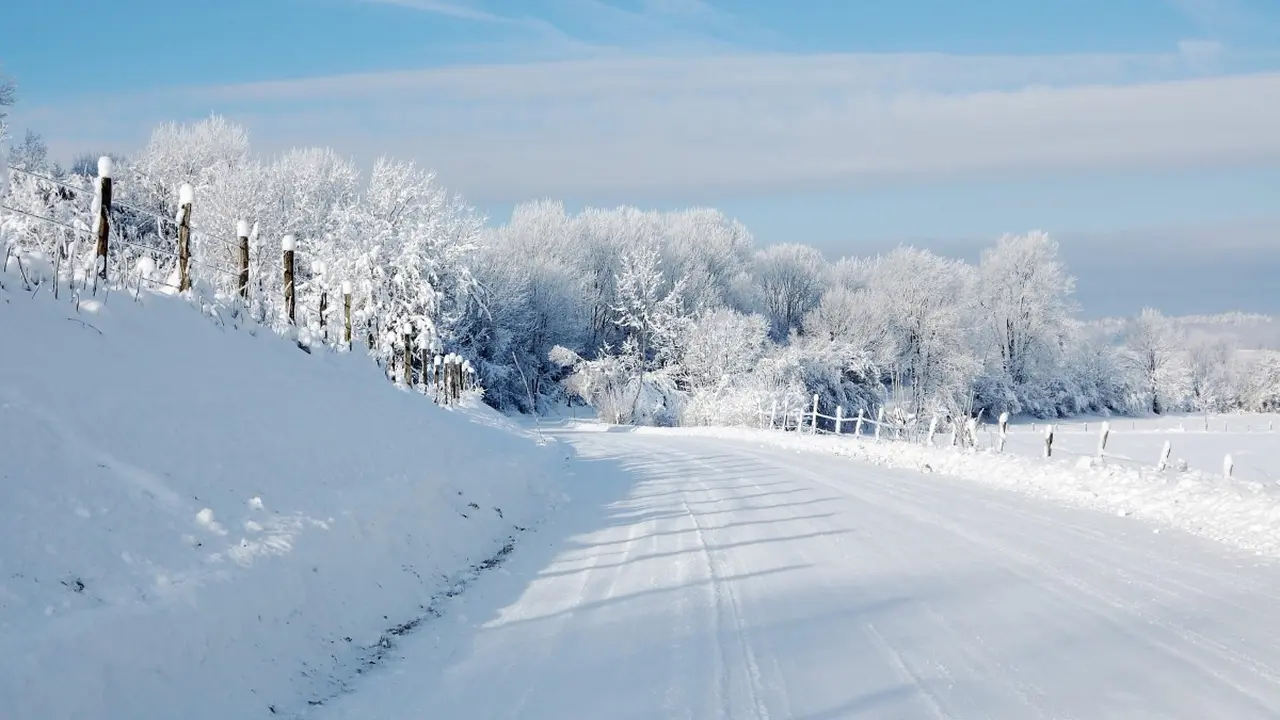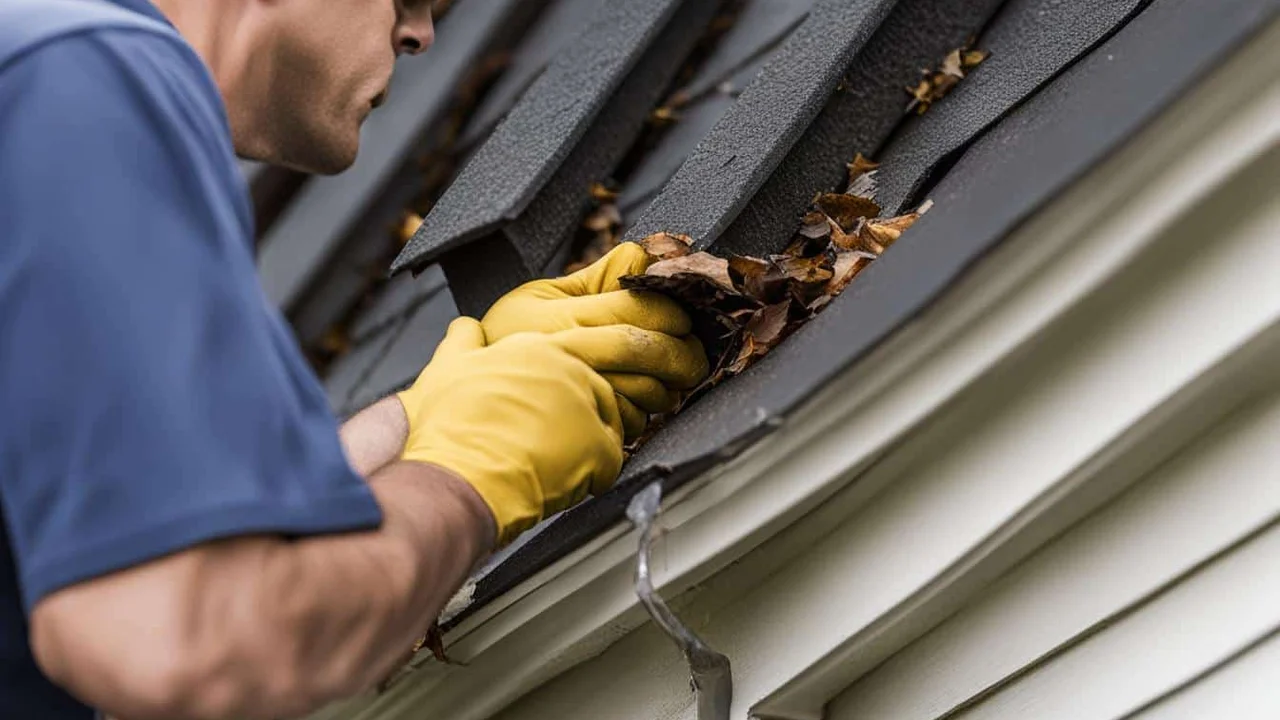Cold Weather Roofing Tips and Materials
Essential tips and recommended materials for roofing in cold climates, focusing on insulation and ice dam prevention.

Cold Weather Roofing Tips and Materials
When you live in a region that experiences harsh winters, your roof isn't just a decorative element; it's your home's primary defense against snow, ice, and freezing temperatures. Choosing the right materials and implementing smart strategies for cold weather roofing is absolutely crucial for protecting your investment and ensuring your family's comfort and safety. This isn't just about slapping on some shingles; it's about a comprehensive approach to insulation, ventilation, and material selection that can withstand the toughest winter conditions, from the snowy peaks of Colorado to the icy plains of the Midwest, and even unexpected cold snaps in typically warmer regions.
We're going to dive deep into what makes a roof truly cold-weather resilient. We'll cover everything from the foundational principles of heat transfer and moisture management to specific product recommendations that have proven their worth in challenging environments. Think of this as your ultimate guide to winter-proofing your roof, ensuring it stands strong season after season.
H2 Understanding Cold Climate Roofing Challenges and Solutions
Cold climates present a unique set of challenges for roofing systems. It's not just the cold itself, but the combination of snow accumulation, freeze-thaw cycles, ice dam formation, and increased wind loads that can wreak havoc on an unprepared roof. Let's break down these challenges and explore the fundamental solutions.
H3 Snow Load Management and Roof Structure
Heavy snowfall isn't just pretty; it's incredibly heavy. A cubic foot of fresh snow can weigh around 7 pounds, but wet, packed snow can easily hit 20 pounds or more per cubic foot. Imagine that across your entire roof! This puts immense stress on your roof's structural integrity. Your roof framing needs to be designed to handle these snow loads, which are typically specified by local building codes. If you're building new or doing a major renovation, ensure your contractor is aware of and adheres to these codes. For existing homes, regular inspections are key to identify any signs of structural strain, such as sagging rafters or ceiling cracks.
Beyond structural strength, roof pitch plays a role. Steeper roofs (a pitch of 6/12 or greater) allow snow to slide off more easily, reducing accumulation. Lower-pitched roofs will hold snow longer, requiring stronger framing and potentially more robust ice and water shield applications.
H3 Ice Dam Prevention and Roof Ventilation
Ice dams are arguably the most insidious cold-weather roofing problem. They form when heat from your home escapes into the attic, warming the roof deck and melting snow. This meltwater then runs down the roof until it hits the colder eaves, where it refreezes, forming a dam. More meltwater backs up behind this dam, seeping under shingles and into your home, causing water damage to ceilings, walls, and insulation. The key to preventing ice dams is a combination of excellent insulation and proper ventilation.
Insulation: A well-insulated attic prevents heat from reaching the roof deck. The goal is to keep the attic temperature as close to the outdoor temperature as possible. This means adequate R-value insulation (check local recommendations, often R-38 to R-60 in cold climates) and ensuring there are no gaps or thermal bridges where heat can escape.
Ventilation: Even with good insulation, some heat will inevitably rise. Proper attic ventilation creates a continuous airflow from the soffit (intake) to the ridge (exhaust), carrying away any warm, moist air before it can melt snow. This keeps the entire roof deck cold and dry. Common ventilation types include continuous soffit vents paired with continuous ridge vents, or a combination of soffit vents and static or powered roof vents. The general rule of thumb is 1 square foot of net free vent area for every 150 square feet of attic floor space, balanced between intake and exhaust.
H3 Freeze-Thaw Cycles and Material Durability
The constant freezing and thawing of moisture can be incredibly damaging. Water expands when it freezes, and this expansion can crack and degrade roofing materials over time. This is why material durability and water resistance are paramount in cold climates. Materials need to be able to withstand repeated cycles of expansion and contraction without losing their integrity.
H2 Essential Roofing Materials for Cold Climates and Their Benefits
Choosing the right roofing material is a critical decision for cold weather performance. Here are some of the top contenders, along with their specific advantages for snowy and icy conditions.
H3 Asphalt Shingles Cold Weather Performance and Product Recommendations
Asphalt shingles are the most common roofing material in North America, and for good reason: they're affordable, versatile, and relatively easy to install. However, not all asphalt shingles are created equal, especially when it comes to cold weather. In cold climates, you want to look for architectural or laminate shingles, which are thicker and more durable than 3-tab shingles. They offer better wind resistance and a longer lifespan.
Key Features for Cold Climates:
- High Wind Resistance: Look for shingles rated for 110 mph or higher.
- Cold Weather Flexibility: Some shingles are designed to remain flexible in lower temperatures, reducing cracking.
- Algae Resistance: While not directly cold-related, algae can thrive in damp conditions created by melting snow.
Product Recommendations:
- GAF Timberline HDZ: These are incredibly popular and for good reason. They offer excellent wind resistance (up to 130 mph with proper installation), a wide nailing zone for easier installation, and a good balance of durability and aesthetics. They are widely available in both the US and some Southeast Asian markets where cold weather might be a concern in mountainous regions. Estimated Cost: $100-$150 per square (100 sq ft) for materials.
- CertainTeed Landmark Pro: Another premium architectural shingle known for its heavy-duty construction and vibrant color blends. It offers strong wind resistance and a good warranty. Estimated Cost: $110-$160 per square for materials.
- Owens Corning Duration Series: Features SureNail Technology for superior gripping power, making them highly resistant to blow-offs in high winds. They also offer good cold weather performance. Estimated Cost: $95-$145 per square for materials.
Use Cases: Ideal for most residential homes in cold climates where budget and traditional aesthetics are important. They perform well when combined with proper underlayment and ventilation.
H3 Metal Roofing Durability and Snow Shedding Capabilities
Metal roofing is an excellent choice for cold climates, offering superior durability, longevity, and inherent snow-shedding properties. Its smooth, hard surface allows snow to slide off easily, reducing snow load and the potential for ice dam formation. However, this also means you need to consider snow guards to prevent large sheets of snow from sliding off and injuring people or damaging property below.
Key Features for Cold Climates:
- Exceptional Durability: Resistant to cracking, shrinking, and erosion from freeze-thaw cycles.
- Long Lifespan: Can last 50-70 years or more.
- Fire Resistant: A Class A fire rating is standard.
- Energy Efficient: Many metal roofs are 'cool roofs,' reflecting solar radiation, which can be beneficial even in winter by preventing excessive heat buildup under the roof.
Product Recommendations:
- Standing Seam Metal Panels (e.g., from Sheffield Metals, Fabral): These are premium metal roofs where the fasteners are hidden, creating a clean look and superior weather tightness. They are highly durable and excellent for snow shedding. Available in steel, aluminum, and copper. Estimated Cost: $300-$600+ per square for materials, depending on metal type and finish.
- Corrugated Metal Panels (e.g., from Metal Sales, Union Corrugating): A more economical option, often used for barns or commercial buildings but gaining popularity for residential use. Exposed fasteners mean slightly higher maintenance but still offer great cold weather performance. Estimated Cost: $150-$300 per square for materials.
Use Cases: Excellent for homes in heavy snowfall areas, cabins, or any property where maximum durability and minimal maintenance are desired. The initial cost is higher, but the lifespan and performance often justify the investment.
H3 Slate Roofing Longevity and Aesthetic Appeal in Winter
Slate is one of the oldest and most durable roofing materials available. It's naturally dense, waterproof, and incredibly resistant to freeze-thaw cycles. A properly installed slate roof can last 100 years or more, making it a true lifetime investment. Its natural beauty also adds significant curb appeal.
Key Features for Cold Climates:
- Extreme Durability: Unaffected by freezing temperatures or ice.
- Waterproof: Naturally impervious to water.
- Heavy: Requires a robust roof structure to support its weight.
- Fire Resistant: Non-combustible.
Product Recommendations:
- North Country Slate: Known for high-quality natural slate from quarries in North America. They offer various colors and thicknesses. Estimated Cost: $800-$1500+ per square for materials, highly variable based on type and origin.
- Evergreen Slate: Another reputable supplier of natural slate, offering a range of colors and sizes suitable for cold climates. Estimated Cost: $750-$1400+ per square for materials.
Use Cases: High-end residential homes, historic properties, or any project where ultimate longevity, natural beauty, and a significant budget are priorities. Its weight makes it unsuitable for all structures without reinforcement.
H3 Synthetic Roofing Materials Modern Solutions for Harsh Winters
Synthetic roofing materials, often made from recycled plastics and rubber, are engineered to mimic the look of natural slate or wood shakes while offering enhanced performance characteristics. They are lightweight, durable, and often come with excellent warranties.
Key Features for Cold Climates:
- Impact Resistant: Excellent resistance to hail and falling debris.
- Lightweight: Can be installed on most existing roof structures.
- Freeze-Thaw Resistant: Engineered to withstand extreme temperature fluctuations.
- Long Lifespan: Often come with 50-year warranties.
Product Recommendations:
- DaVinci Roofscapes (e.g., DaVinci Slate, DaVinci Shake): These are premium synthetic products that replicate the look of natural slate and cedar shakes with incredible realism. They are highly durable, impact-resistant (Class 4), and perform exceptionally well in cold weather. Estimated Cost: $400-$700+ per square for materials.
- F-Wave REVIA Synthetic Shingles: A newer entrant, F-Wave offers a single-piece synthetic shingle that is very durable, lightweight, and has a Class 4 impact rating. They are designed for easy installation and strong performance in various climates. Estimated Cost: $350-$600 per square for materials.
Use Cases: Homeowners who want the aesthetic of slate or wood but require superior durability, lighter weight, and lower maintenance. Excellent for areas prone to hail or extreme weather.
H2 Crucial Underlayment and Accessories for Cold Weather Roofing
The roofing material itself is only part of the equation. What lies beneath and around it is equally important for cold climate performance.
H3 Ice and Water Shield The Ultimate Leak Barrier
This self-adhering membrane is non-negotiable in cold climates. It's installed directly onto the roof deck, typically along the eaves, in valleys, around chimneys, and other penetrations. If an ice dam forms and water backs up under your shingles, the ice and water shield prevents it from penetrating the roof deck and entering your home. Building codes often mandate its use in cold regions, extending at least 24 inches past the interior wall line.
Product Recommendations:
- Grace Ice & Water Shield: The original and still a gold standard. Known for its aggressive adhesion and proven performance. Estimated Cost: $150-$250 per roll (200 sq ft).
- GAF StormGuard: A popular and effective self-adhering membrane from a leading shingle manufacturer. Estimated Cost: $120-$200 per roll.
H3 High-Quality Synthetic Underlayment for Enhanced Protection
Beyond the ice and water shield, a good synthetic underlayment provides an additional layer of protection between your roofing material and the roof deck. Unlike traditional felt paper, synthetic underlayments are much stronger, tear-resistant, and don't absorb moisture, making them ideal for cold, damp conditions. They also provide a secondary water barrier if your primary roofing material is compromised.
Product Recommendations:
- Titanium UDL30/50: A very strong and durable synthetic underlayment that can withstand harsh conditions and foot traffic during installation. Estimated Cost: $70-$120 per roll (1000 sq ft).
- RhinoRoof U20: Another excellent synthetic option, lightweight, and easy to install, offering superior tear resistance. Estimated Cost: $60-$100 per roll.
H3 Proper Flashing and Sealants for Watertight Integrity
Flashing, typically made of metal (aluminum, copper, or galvanized steel), is installed at critical junctures on your roof, such as around chimneys, skylights, vents, and in valleys. Its purpose is to divert water away from these vulnerable areas. In cold climates, flashing needs to be meticulously installed and sealed to prevent water intrusion from melting snow and ice. High-quality, cold-weather-rated sealants are essential to ensure these areas remain watertight even in extreme temperatures.
H2 Installation Best Practices for Cold Weather Roofing Success
Even the best materials won't perform if they're not installed correctly. Here are some critical installation considerations for cold climates.
H3 Nailing and Adhesion in Low Temperatures
Asphalt shingles rely on a thermal seal strip that activates with heat from the sun to bond the shingles together, providing wind resistance. In cold weather, this sealing process can be delayed or even prevented. Professional roofers in cold climates often use additional hand-sealing techniques or specific cold-weather adhesives to ensure proper bonding. Nailing patterns are also crucial; ensure fasteners are driven flush, not overdriven or underdriven, to prevent shingle damage and ensure proper hold.
H3 Proper Overhang and Drip Edge Installation
The overhang of your roof and the installation of drip edge are important for directing water away from your fascia and foundation. In cold climates, a slightly larger overhang can help keep meltwater further from the house, reducing the chance of it refreezing on the fascia or entering the wall cavity. Drip edge should be installed correctly to prevent water from wicking back under the shingles.
H3 Valley and Penetration Detailing for Maximum Protection
Valleys (where two roof planes meet) and penetrations (vents, chimneys, skylights) are the most common areas for leaks. In cold climates, these areas require extra attention. Open valleys with metal flashing are often preferred over closed-cut valleys, as they allow for better water flow and are less prone to ice buildup. All penetrations should be flashed with appropriate materials and sealed with high-quality, flexible sealants designed for extreme temperatures.
H2 Maintenance Tips for Your Cold Climate Roof
Once your cold-weather-ready roof is installed, ongoing maintenance is key to its longevity and performance.
H3 Regular Inspections and Debris Removal
Before winter sets in, conduct a thorough roof inspection. Look for loose or damaged shingles, cracked flashing, or clogged gutters. Remove any leaves, branches, or other debris that could trap moisture or impede water flow. After heavy snowfalls, a visual check from the ground is advisable, looking for any obvious issues.
H3 Gutter Cleaning and Downspout Management
Clogged gutters are a major contributor to ice dam formation. Ensure your gutters are completely clear of debris before winter. Consider installing gutter guards to prevent future clogs. Make sure downspouts direct water well away from your foundation to prevent pooling and refreezing near the house.
H3 Snow Removal Best Practices When Necessary
While a well-designed roof should handle snow loads, in extreme cases of heavy, wet snow, manual snow removal might be necessary. If you do remove snow, use a roof rake from the ground to avoid damaging shingles. Never use sharp tools or try to chip away at ice, as this can severely damage your roof. If you have significant ice dams, it's best to call a professional who can safely remove them using steam or other non-damaging methods.
H2 Energy Efficiency and Your Cold Climate Roof
A well-performing cold climate roof isn't just about protection; it's also about energy efficiency. By preventing heat loss and managing moisture, your roof contributes significantly to lower heating bills.
H3 The Role of Insulation and Ventilation in Energy Savings
As discussed, proper attic insulation and ventilation are paramount. They work together to create a cold roof deck, which prevents heat loss from your living space and stops ice dam formation. This means your furnace isn't working overtime to compensate for heat escaping through your roof, leading to substantial energy savings.
H3 Cool Roof Technology Benefits in Winter
While 'cool roofs' are often associated with hot climates, their reflective properties can still offer benefits in winter. By reflecting solar radiation, they can help prevent excessive heat buildup on the roof surface, which can contribute to premature snow melt and ice dam formation, especially on sunny winter days. This isn't their primary function in winter, but it's a secondary benefit to consider.
H2 Choosing the Right Roofing Contractor for Cold Climates
Selecting an experienced and reputable roofing contractor is perhaps the most important decision you'll make for your cold climate roof. Look for contractors with a proven track record in your specific region.
H3 Experience with Cold Weather Installations
Ask for references from jobs completed in cold weather. A contractor experienced in winter installations will understand the nuances of working with materials in low temperatures, ensuring proper adhesion and sealing. They'll also be familiar with local building codes related to snow loads and ice and water shield requirements.
H3 Proper Licensing and Insurance
Always verify that your contractor is fully licensed and insured. This protects you from liability in case of accidents or property damage during the project. This is non-negotiable, regardless of the climate.
H3 Comprehensive Warranty and Customer Service
A good contractor will offer a strong warranty on both materials and workmanship. Understand what's covered and for how long. Excellent customer service is also key; you want a contractor who is responsive and stands behind their work, especially if issues arise after a harsh winter.
Investing in a robust, cold-weather-ready roof is one of the smartest decisions you can make for your home in a challenging climate. By understanding the unique demands of winter, selecting appropriate materials, ensuring meticulous installation, and committing to regular maintenance, you can ensure your roof provides reliable protection and peace of mind for decades to come. Don't cut corners when it comes to your roof's winter performance; it's the shield that protects everything underneath.
:max_bytes(150000):strip_icc()/277019-baked-pork-chops-with-cream-of-mushroom-soup-DDMFS-beauty-4x3-BG-7505-5762b731cf30447d9cbbbbbf387beafa.jpg)





